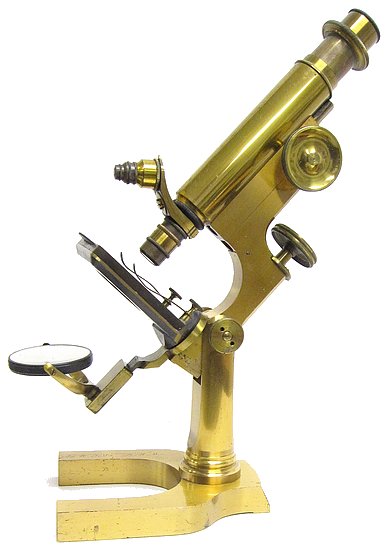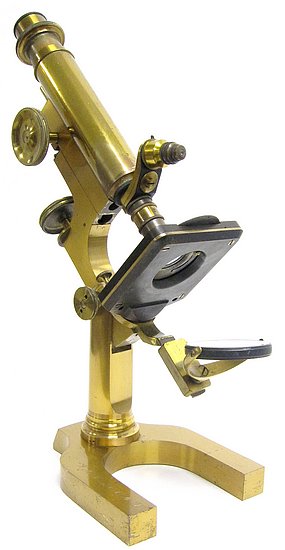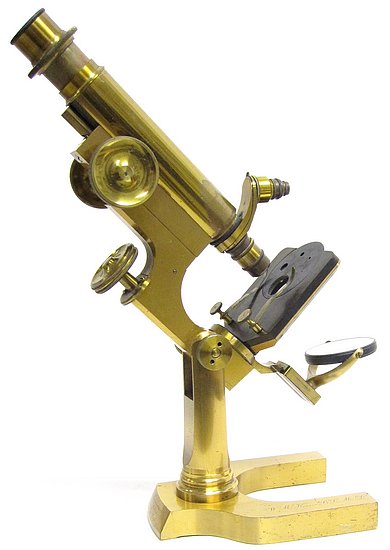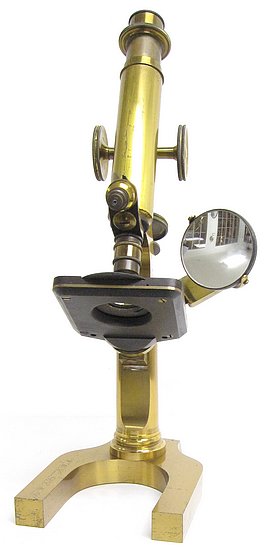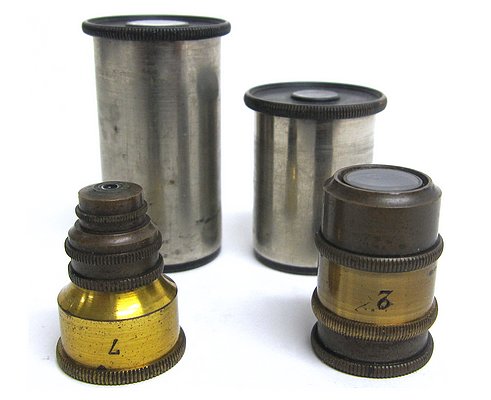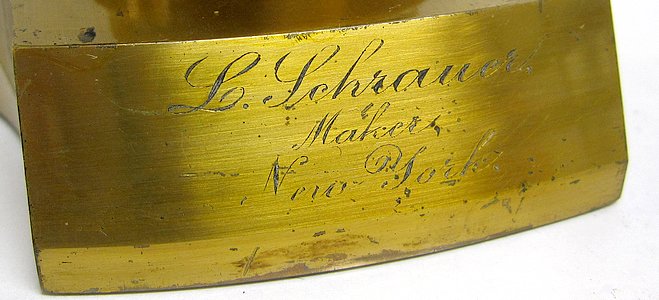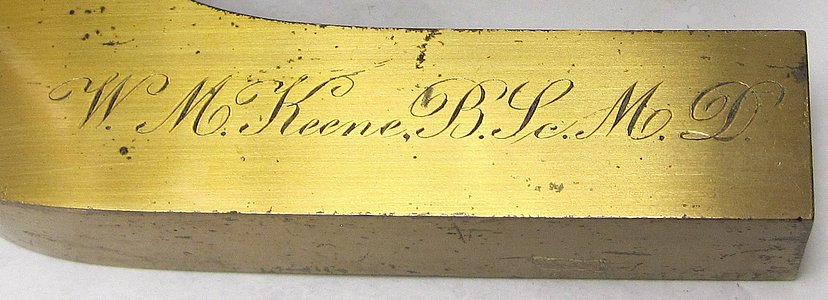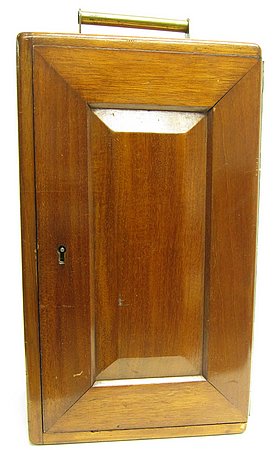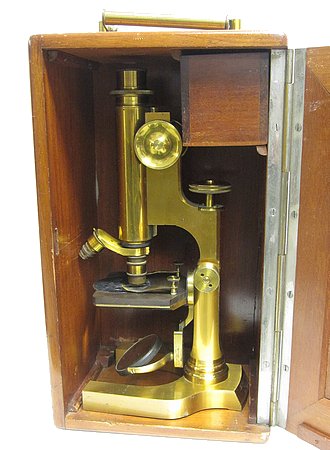The microscope, with its horseshoe base and tapered pillar,
resembles the continental model that was popular at the end of the 19th century.
However, the microscope differs from the standard continental microscope in some
important ways. In the continental model, the fine adjustment mechanism moves
the entire limb along with the body-tube. With this Schrauer model however,
the fine adjustment is actually a spring-loaded long lever mechanism. One end
of the lever engages the screw of the adjustment knob while the other end
moves the body tube along with the main focusing adjustment. The limb remains
stationary. The substage of this microscope consists of an aperture wheel
embedded in the stage. In addition, unlike a typical continental model, the
mirror on this microscope is mounted on an adjustable swinging arm capable
of being positioned above the stage for illumination of opaque objects.
Leopold Schrauer first began the manufacture of microscopes in the late 1850's
in Boston. By 1877, he was located in New York City. While an 1878 advertisement
lists Schrauer at 50 Chatham St. NY, an 1879 advertisement lists him at
42 Nassau St. NY. Schrauer microscopes are relatively uncommon compared
to those sold by some of the other contemporary American manufacturers.
